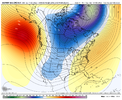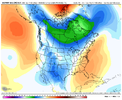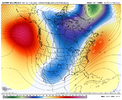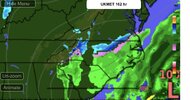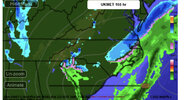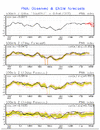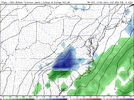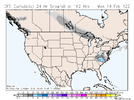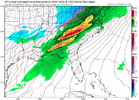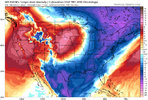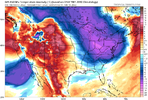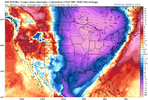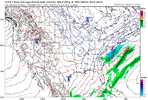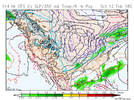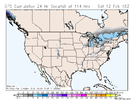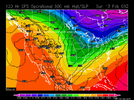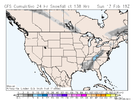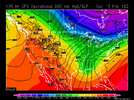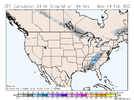Lol at how close the euro is to mega bomb.
You can see both the gfs and euro phase into the base of the trough but it's so positive tilt and the energy is weak enough it doesn't tilt negative and wrap up. Not a bad d6-7 look imo I've seen people try to spin uglier looks into the next 93/00
Looking at the forecasts for Feb 13th, we fortunately have the nice combo of a persistent pretty strong +PNA (~+1) and just about the most favorable big snow climo of the season (mid-Feb) still on our side despite a strong +AO (+2) and strong +NAO (+1). The MJO forecasts for 2/13 are split between phases 3 and 4.
Looking back at 6"+ RDU snowstorms since 1950, have there been any with a strong +AO, and +NAO?
- Not strong but
2/9/1967 did have a
moderate +NAO and a weak +AO along with a moderate +PNA
.
-
2/6/1984, during a similarly
weakening La Nina and
MJO phase 3, did have a
strong +NAO and
moderate +AO along with a moderate +PNA.
- 1/7-8/1988 had a
moderate +NAO but it had a neutral rather than +AO. It had a moderate +PNA.
-
2/17-18/1989, during
La Nina, had a
very strong +NAO and +AO along with a neutral PNA.
- 1/17-18/2018, during
La Nina and
phase 4 MJO, had a
strong +NAO though only weak +AO along with a neutral PNA.
- 12/9-10/2018, during
MJO phase 3, had a
moderate +NAO but it had a neutral rather than +AO. It had a moderate +PNA.
The items I bolded, whether they be nearby dates (3 storms), similar ENSO (3 storms), similar MJO (3 storms), moderate+ +NAO (all 6 storms), or moderate+ +AO (2 storms), are all somewhat analogous to 2/13/22 indices. The most encouraging analogs (the most bolded items) are
2/6/1984 (5 bolded),
2/17-18/1989 (4 bolded), and
1/17-18/2018 (3 bolded). Plus we have the borderline strong PNA on our side. This analysis is by no means for the purpose of predicting a big (or any) winter storm for the SE US as they're not too common. Rather it is to show it is far too early (6 days out) to give up hope based on these analogs despite a strong +NAO and +AO.
Did any of these 6 hit areas outside of NC pretty significantly? The answer is yes for all 6, especially 2/9/1967, 1/17/1988, and 1/17-18/2018.
-
2/9/1967 gave significant snow to N and C GA: ATL 2" AHN 2.5", MCN 1", AGS 3.4"; AL: BHM: 0.9"; SC: CAE 3.3", GSP 1.5"
- 2/6/1984 gave good snow to N GA/TN/upstate SC
-
1/7/1988 classic pretty boardwide SN/IP/ZR, with even some ZR down in SAV and CHS
- 2/17-18/1989 major ZR GSP and nearby CAD areas
-
1/17-18/2018 sig snow much of N/C GA, GSP, N/C AL, TN
- 12/9-10/2018 GSP big mess
*Note that GSP got hit with all 6

